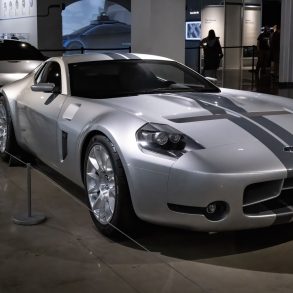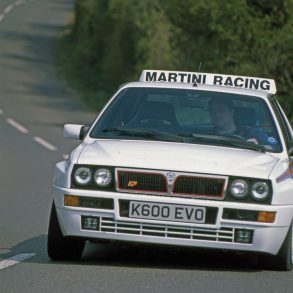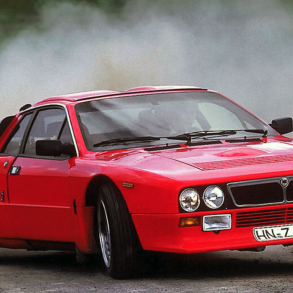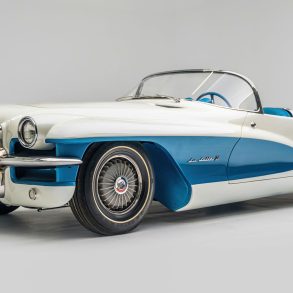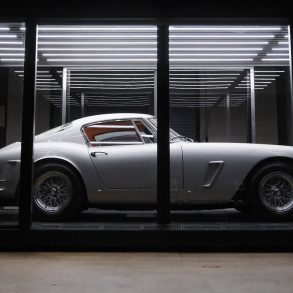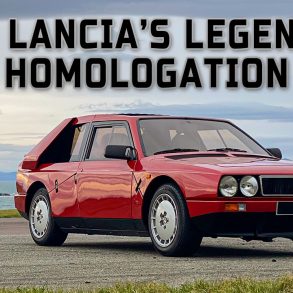FCA has opened its new Heritage HUB and museum in the newly renovated Mirafiori manufacturing complex, in Turin.
The new Heritage HUB is set in the former Officina 81 site in Via Plava, part of the huge industrial area of Mirafiori, a historic mechanical manufacturing complex. The original building has been subjected to a careful conservative restoration which respects its industrial nature: the historic mustard and green colors, the cement flooring and the latticework effect of countless metal pillars. The HUB contains all of FCA Heritage’s services and product activities, and serves as the exclusive display space for the “Reloaded by Creators” project, which certifies and restores FCA’s many vintage models, and prepares them for sale. Additionally, the 15,000 m2 Heritage HUB also displays 250 vehicles spanning the history of Fiat, Lancia, Abarth and Alfa Romeo.
These are authentic jewels of the FCA Heritage collection – some never before exhibited. The central area features eight thematic exhibitions, each of which highlights eight cars from different eras and brands: the oldest dating back to 1908, and the most modern to 2008.
Theme Areas
Archistars
This theme area focuses on motorcar architecture, when a new project was significant above all for the functional and manufacturing needs it was designed to satisfy. The Lancia Lambda is a prime example. It was the first car in the world based on a supporting unibody, the pride of Vincenzo Lancia and the Lancia Flavia, the first Italian model equipped with front-wheel drive and disc brakes on all four wheels. Numerous Fiat creations designed for the family are featured: from the Fiat 500 Topolino A designed by Dante Giacosa on his debut, to the 600 – the family car par excellencein the years of the Italian economic boom -– up to the Fiat Panda and Uno, two of the most important modern utility successes
Concept and Personalized cars
The cars collected in this section show original bodywork and fittings and shift between dream car utopias and the more concrete dimension of concept cars and custom-built cars, part of Italian body shops’ tradition of creating personalized and unique cars. This thematic island therefore boasts some very different examples: the Fiat 130 Familiar and Panda Rock Moretti – both of which belonged to members of the Agnelli family – featuring highly special fittings on standard models which also modified usage options, the Abarth 2400 Coupé Alemanno by Carlo Abarth, and the precious Lancia Astura Farina and Flaminia Coupé Loraymo.
Eco and Sustainable
Spotlight on the Fiat Group projects which since the early 1970s have prioritized environmental issues, with the aim of creating vehicles that limit their ecological impact during manufacture, use and disposal. Following an approach focused on economy of use and optimized production methods, Fiat has carried out research programs which have led to the development of solutions and technologies and then gradually transferred them to its entire range. Prototypes of compact electric cars also stand out, such as the X1/23 of 1974 and the Ecobasic of 1999, an engineering jewel in terms of both engines and components.
Epic Journeys
A motorcar is not just a simple means of transport: over the decades, driving has acquired an anthropological dimension, evoking ideas of freedom and independence. Driving by car can mean escape, adventure, thirst for knowledge but also challenge and competition. Achieving new driving feats is the best way to check the functionality of each model and its components: it tests its operation under extreme conditions, prevents possible anomalies and demonstrates its reliability. This section includes a selection of cars which have been protagonists of extraordinary adventures: for example the Fiat Campagnola AR 51 that drove the length of Africa from Cape Town to Algiers in 1952 in a record 11 days, or the Fiat 1100 E which, in 1953, completed the first single-driver around the world tour, covering over 72,000 kilometers. Then there was the Fiat 124S which in 1970 reached the North Cape in 50 days from Cape Town, the Fiat 131 Abarth Diesel that in 1977, before its commercial launch, won the London-Sydney raid. Or the Lancia Delta HF Integral Group A winner with Miki Biasion and Tiziano Siviero of the Safari Rally in 1988, and the 500 Overland which in 2008 retraced the path of the iconic “Beijing-Paris” event, following the Overland caravan.
Records and Races
Competition has always been an ongoing stimulus for designers and technicians: to achieve ever-higher levels of performance, to develop more efficient and reliable engines and mechanical and electronic devices, and to refine bodywork aerodynamics. This section features cars that have left their mark through participation in speed and duration races, or achieved successful attempts at breaking world records. The two oldest cars, the Fiat S61 and the 12HP “Alfa” Sport – a competition version of the first car built by Lancia – were both produced in 1908. Alongside these models is a Formula 1 Lancia D50, three of the most glorious record-setting cars built by Abarth in the 1950s and 1960s and two Endurance race champions: the Lancia Beta Montecarlo Turbo and the LC2.
Small and Safe
A theme on which both Fiat and Lancia brands have always worked since the early 20th century. For example, in 1933, the introduction of the supporting unibody on the Lancia Augusta – the first closed car in the world to adopt this revolutionary patent – contributed to an increase in torsional rigidity and greater safety in the event of a collision. The same innovative architecture was used in the Lancia Ardea, produced from 1939, and combined with independent front wheel suspension, thus further benefitting road holding and dynamic performance. Fiat’s research into safe and compact cars can be seen in various interesting prototypes such as the Fiat City Taxi (1968), a vehicle for public use with an unusual asymmetrical lateral flank, and the ESV 1500 and ESV 2000 models, both specifically designed to analyse safety and resistance in the event of a collision.
Style Marks
This section contains various cars from different eras, which thanks to their characteristics and personalities, effectively expressed the identity of their respective brands at the time, introducing innovative stylistic contents which later became widely shared trends. In other words, cars that have become part of the collective imagination, representing milestones and key references in the field of motorcar design. The Lancia Aurelia B20 stands out as an archetype of the Gran Turismo touring sedans, foreshadowing the “vintage” phenomenon through its renewal of past forms and typologies, as in the case of the Fiat Barchetta.
The Rally Era
Rally is a discipline that excites millions of enthusiastic followers all over the world, attracted by the audacity of pilots as they conjure up speed and dexterity in extreme conditions, from snowy peaks to arid deserts. These adverse conditions have made the world of motor rallies a tough and selective testing ground for the most ambitious technological challenges. Naturally, the Lancia, Fiat and Abarth brands have never shied away from these challenges, and have carved their names on the most prestigious winner’s trophies. This Heritage HUB theme area, therefore, boasts the Lancia Fulvia HF 1600, which won the 1972 Monte Carlo Rally, the futuristic Stratos HF, the victorious Delta HF and the Fiat 124 Abarth Rally and 131 Abarth Rally.
The Heritage HUB will soon be open to the public, but can be viewed now at FCA Heritage in the new “Brand” section, which describes brand histories in terms of industrial development, logo evolution, key contributors and key models.








